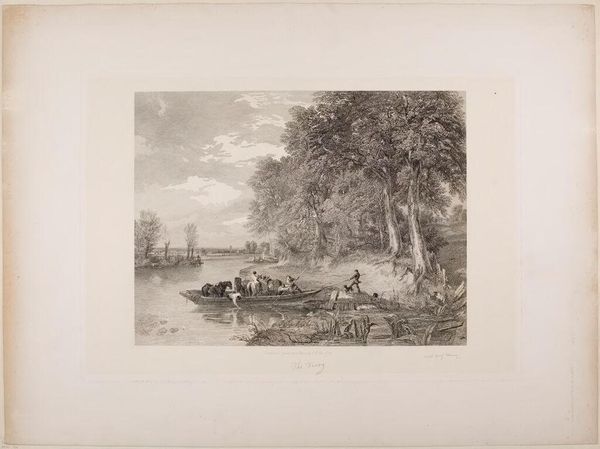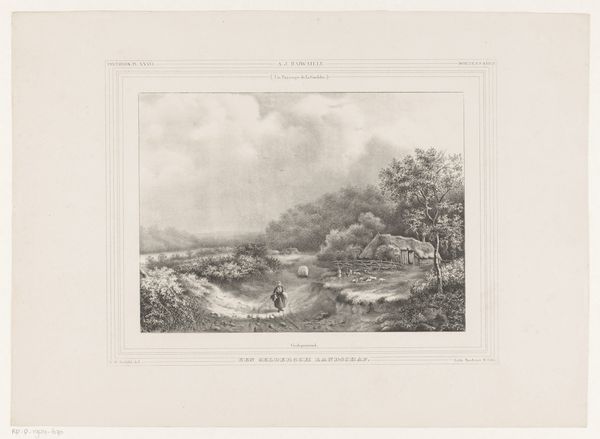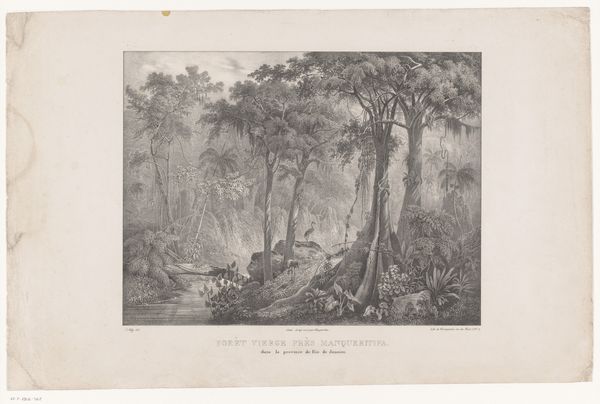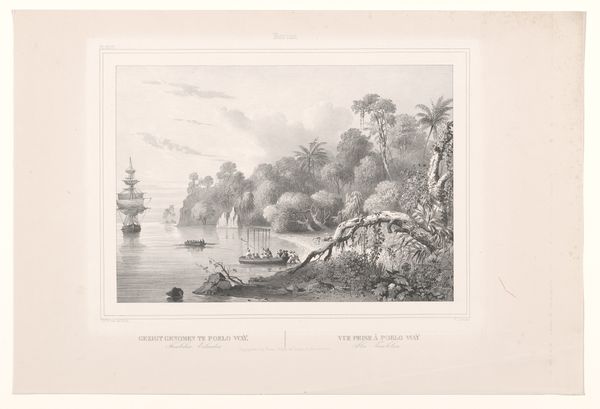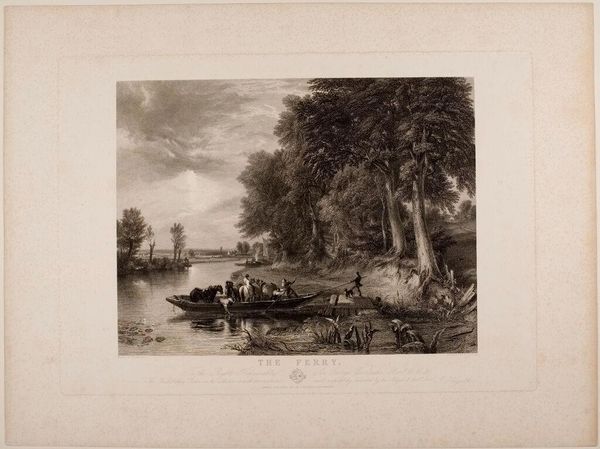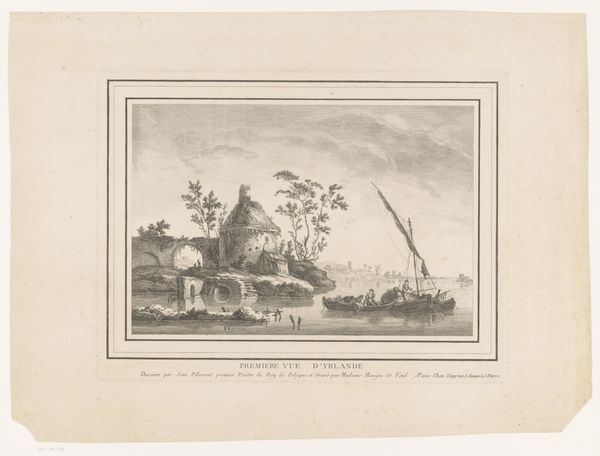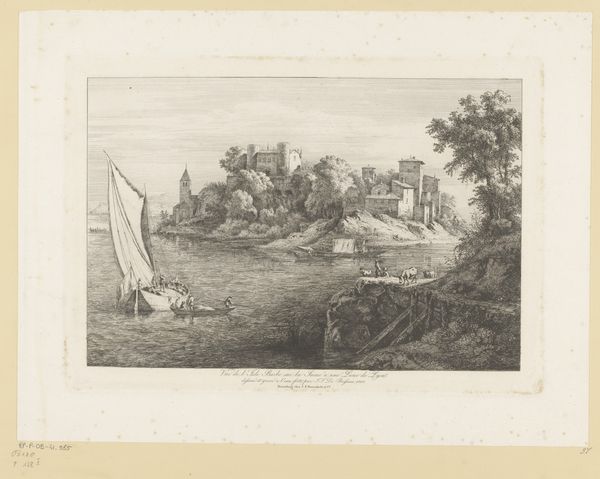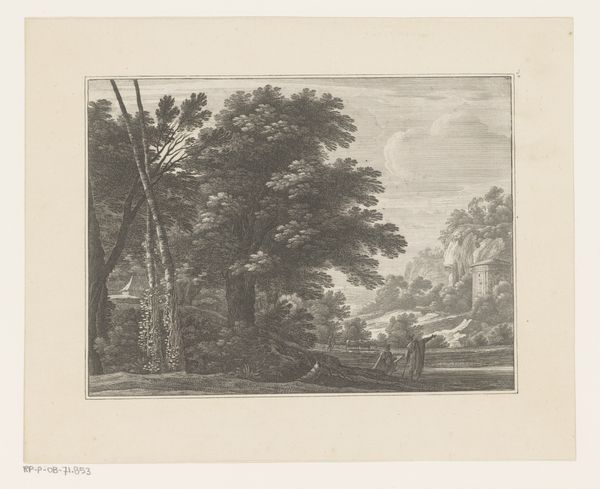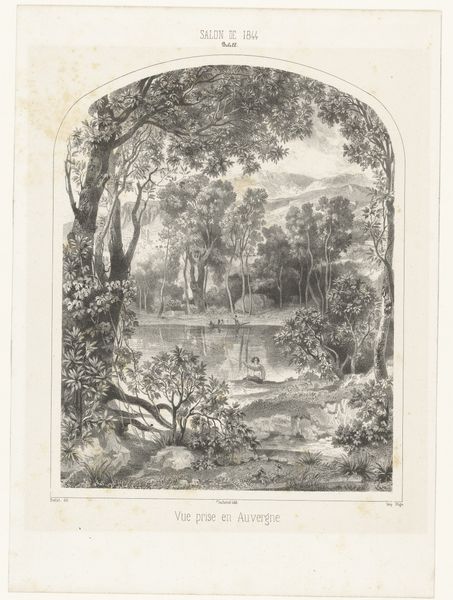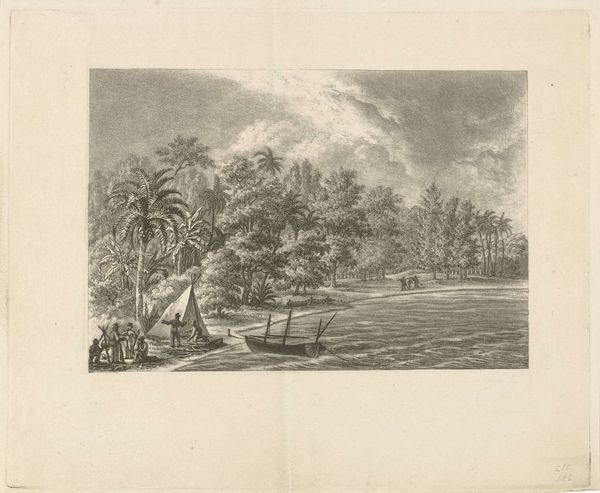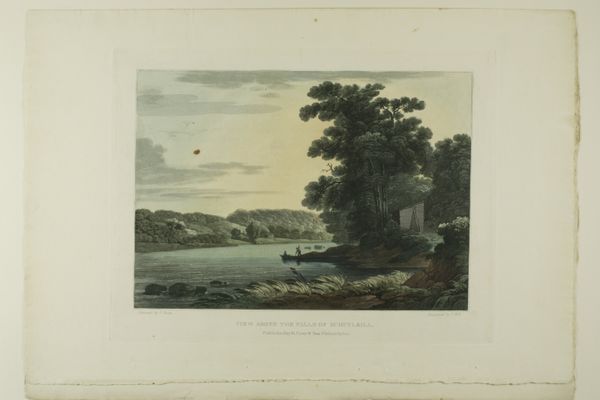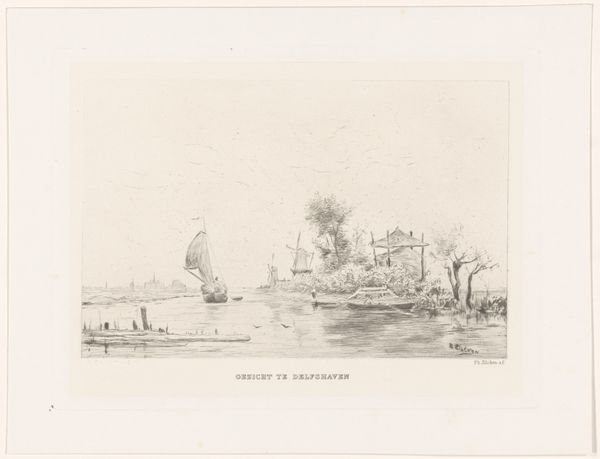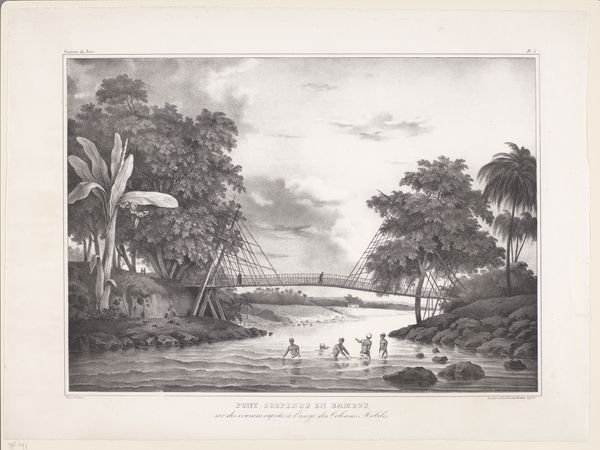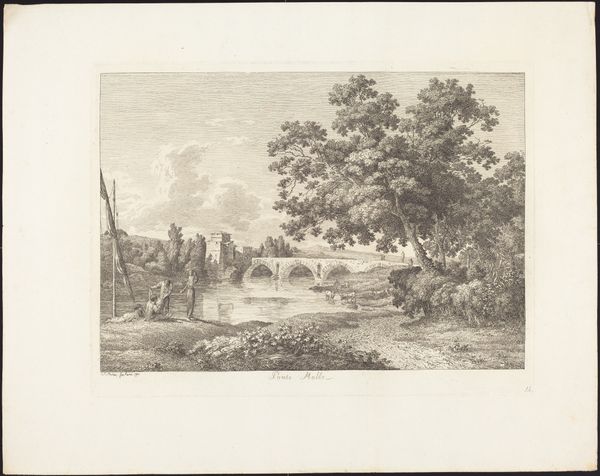
print, etching
#
dutch-golden-age
# print
#
etching
#
landscape
#
river
#
romanticism
Dimensions: height 340 mm, width 510 mm
Copyright: Rijks Museum: Open Domain
Editor: So this is Paulus Lauters' "View of the River in Pontianak," an etching from around 1843 to 1845. I’m struck by how the dark, dense foliage frames the river and the tiny boat. What symbols do you see at play in this landscape? Curator: The river itself acts as a powerful symbol. Rivers, throughout history, have signified journeys, transitions, and the flow of life. This particular river, in Pontianak, then a Dutch colony, speaks to exploration, resource extraction, and perhaps even a romanticized view of the ‘untamed’ East. Do you notice how the boat, a clear symbol of civilization and progress, is dwarfed by the scale of the nature around it? Editor: I do. It almost looks as if nature is about to reclaim everything! So, the river represents the possibility of passage and the boat, an intrusion, perhaps? Curator: Precisely. Consider also the specific trees and flora – each carries its own significance, recognized both by the local people and reinterpreted through a European lens. Palms, for example, often evoke images of paradise and exoticism. Even the light, or rather the controlled shading in this etching, contributes – drawing our eyes to certain points, while obscuring others in mystery. Editor: The romanticism style of art aimed at picturing scenes of exotic faraway places. Would you consider it part of that movement? Curator: Without a doubt. The image invites viewers into an emotional landscape as much as a physical one. How does it make you feel? Editor: Slightly uneasy, but also intrigued. It makes you feel that that river must go somewhere important and hide secrets. Curator: The enduring power of landscape art lies in its capacity to tap into our collective memory and imagination, reflecting not just what is seen, but also what is felt, what is feared, and what is desired. This work captures a specific moment in history, but it speaks to timeless human longings.
Comments
No comments
Be the first to comment and join the conversation on the ultimate creative platform.
